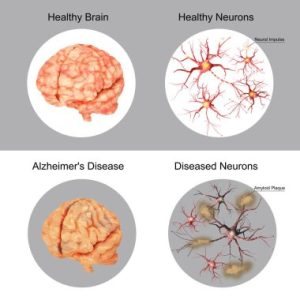
How Exercise Benefits Brain (6 Important Functions)
How Exercise Benefits Brain? Regular physical activity not only strengthens the body but also enhances cognitive function, improving memory, focus, and overall mental well-being. Exercise, a potent elixir for the body, has emerged as a formidable ally for brain health. The symbiotic relationship between physical activity and cognitive prowess is a testament to the multifaceted benefits of regular exercise. Understanding this correlation unveils a trove of cognitive marvels, highlighting how engaging in physical activity can significantly enhance brain function.
In the intricate dance of body and mind, the symphony of sweat and neurons unfolds a captivating narrative of resilience and brilliance. Like a conductor orchestrating a masterpiece, exercise takes center stage in sculpting not only a robust physique but also a vibrant intellect. Beneath the sheen of perspiration lies a transformative elixir for the brain, weaving a tale of cognitive prowess and mental fortitude.
As each heartbeat harmonizes with the rhythm of movement, the brain emerges as the ultimate beneficiary, reaping rewards that extend far beyond the confines of the gym floor. Step into the realm where the pulse of physical exertion echoes in the corridors of cognition, and discover the captivating saga of how exercise becomes the catalyst for unlocking the full potential of the human brain.

How Exercise Benefits Brain
Engaging in regular exercise significantly benefits the brain by improving cognitive function, enhancing memory, and fostering overall mental well-being.
Cognitive Enhancement Through Physical Activity
Exercise serves as a catalyst for cognitive enhancement, with an unparalleled impact on memory retention, information processing, and problem-solving skills. The neurobiological mechanisms triggered by physical activity stimulate the release of neurotransmitters, such as dopamine and serotonin, contributing to heightened mental acuity.
Neuroplasticity and Exercise
The concept of neuroplasticity often hailed as the brain’s ability to reorganize and form new neural connections, is amplified through exercise. Regular physical activity acts as a powerful stimulus, promoting the growth of neurons and fostering the development of intricate neural networks. This neuroplasticity is instrumental in maintaining cognitive flexibility and adaptability.
Stress Reduction and Cognitive Resilience
Exercise, a natural stress-buster, plays a pivotal role in mitigating the detrimental effects of chronic stress on the brain. The release of endorphins during physical activity not only uplifts mood but also creates an environment conducive to optimal cognitive function. This resilience against stress is vital for preserving cognitive abilities over the long term.
Blood Flow and Oxygenation
The cardiovascular benefits of exercise extend beyond the heart, positively impacting brain health. Increased blood flow and oxygenation resulting from regular physical activity enhance nutrient delivery to the brain, fortifying its cellular infrastructure. This heightened nourishment contributes to improved cognitive functions, including attention, focus, and information processing speed.
Physical Exercise and Neurotransmitters
Release of Endorphins During Exercise
Role in Mood Regulation
Engaging in physical exercise triggers the release of endorphins, often referred to as the body’s natural “feel-good” chemicals. These endorphins interact with receptors in the brain, acting as natural painkillers and mood elevators. As a result, individuals often experience a heightened sense of well-being and happiness during and after exercise. Incorporating regular physical activity into your routine is a powerful way to boost overall mood and emotional resilience.
Reduction of Stress and Anxiety
The release of endorphins during exercise plays a crucial role in stress and anxiety reduction. These neurotransmitters act as a natural stress buffer, helping to alleviate feelings of tension and anxiety. Regular physical activity, such as aerobic exercises, has been shown to effectively manage stress levels. Making exercise a part of your routine contributes not only to physical health but also mental well-being.
Increase in Dopamine Production
Impact on Motivation and Reward
Physical exercise stimulates the production of dopamine, a neurotransmitter associated with motivation and reward. This surge in dopamine levels during and after exercise creates a sense of pleasure, reinforcing the behavior of regular physical activity. This positive reinforcement contributes to increased motivation, making it more likely for individuals to maintain a consistent exercise routine.
Connection to Improved Learning and Memory
The increased production of dopamine is not only linked to motivation but also plays a role in cognitive functions, including learning and memory. Regular exercise has been shown to enhance synaptic plasticity, the ability of brain cells to strengthen connections. This connection between dopamine release and cognitive improvement underscores the importance of physical activity in supporting overall brain health.
Cardiovascular Exercise and Brain Blood Flow
Enhanced blood circulation to the brain
Oxygen and Nutrient Delivery
Enhanced blood circulation to the brain is a pivotal aspect of the numerous benefits that exercise bestows upon cognitive function. When engaged in physical activity, the cardiovascular system responds by increasing the flow of blood to various parts of the body, including the brain. This augmented blood circulation plays a crucial role in delivering oxygen and essential nutrients to the brain cells, promoting optimal neural functioning.
The increased supply of oxygen aids in the production of energy, facilitating enhanced cognitive performance, memory retention, and overall mental acuity. Moreover, the improved nutrient delivery supports the growth and maintenance of neurons, fostering neuroplasticity and potentially mitigating the risk of neurodegenerative conditions. Regular exercise, therefore, becomes a proactive measure for maintaining brain health, enhancing cognitive abilities, and potentially reducing the likelihood of cognitive decline associated with aging.
Removal of Waste Products
Engaging in regular physical activity promotes improved blood flow throughout the body, including to the brain. This increased blood circulation ensures a more efficient delivery of oxygen and essential nutrients to brain cells, supporting their optimal function. Moreover, exercise aids in the removal of waste products from the brain. As blood flow intensifies during physical activity, the process of eliminating harmful toxins and metabolic byproducts is accelerated.
This cleansing mechanism is crucial for maintaining a healthy and well-functioning brain. Additionally, exercise has been linked to the release of chemicals such as endorphins and growth factors, which further contribute to the overall well-being of the brain by promoting cell growth and enhancing neural connections, ultimately benefiting cognitive function and mental well-being.
Association with reduced risk of cerebrovascular diseases
Stroke Prevention
In the realm of stroke prevention, exercise emerges as a powerful ally, significantly contributing to the overall well-being of the brain. Regular physical activity has been proven to reduce the risk of stroke by improving cardiovascular health, regulating blood pressure, and enhancing blood circulation throughout the body. Engaging in activities that elevate heart rate, such as aerobic exercises or brisk walking, helps to maintain a healthy weight and control cholesterol levels.
Moreover, exercise promotes the production of neurotrophic factors, which support the growth and survival of neurons, ultimately fortifying the brain against the potential damage that can lead to strokes. Additionally, physical activity plays a crucial role in managing stress, another risk factor for stroke, by releasing endorphins and promoting a positive mental state. Hence, integrating exercise into daily routines stands as a fundamental component of stroke prevention, offering a multifaceted approach to safeguarding the intricate functions of the brain.
Maintenance of Healthy Blood Vessels in the Brain
Maintenance of healthy blood vessels in the brain is crucial for overall cognitive function, and exercise plays a significant role in achieving and sustaining vascular health. Regular physical activity enhances blood flow to the brain by promoting the development of new blood vessels, a process known as angiogenesis. Furthermore, exercise helps regulate blood pressure and cholesterol levels, reducing the risk of vascular damage and potential cognitive decline.
Engaging in aerobic activities, such as running or brisk walking, boosts the production of nitric oxide, a compound that dilates blood vessels and improves their flexibility. This increased blood flow facilitates the delivery of essential nutrients and oxygen to brain cells, supporting their optimal functioning. Additionally, exercise promotes the release of neurotrophic factors, which aid in the growth and maintenance of nerve cells, contributing to improved cognitive abilities.

Neurogenesis and Exercise
Stimulation of neurotrophic factors
Brain-Derived Neurotrophic Factor (BDNF) and its Role
Brain-Derived Neurotrophic Factor (BDNF) is a crucial protein that plays a pivotal role in the functioning and health of the brain. It is particularly associated with the positive effects that exercise has on the brain. BDNF acts as a neurotrophin promoting the survival, growth, and maintenance of neurons. When an individual engages in physical activity, especially aerobic exercise, the production and release of BDNF increase.
This heightened BDNF level is linked to improved cognitive function, enhanced learning, and a reduced risk of neurodegenerative diseases. BDNF supports the growth and development of new neurons and synapses, which contributes to neuroplasticity, the brain’s ability to adapt and reorganize itself. Moreover, BDNF facilitates the formation of new blood vessels, promoting better blood flow and nutrient delivery to the brain. Overall, the correlation between exercise, elevated BDNF levels, and cognitive benefits underscores the importance of physical activity in maintaining optimal brain health.
Promotion of Neuronal Growth and Survival
Exercise has been found to be a powerful promoter of neuronal growth and survival, contributing significantly to the overall health and function of the brain. Regular physical activity has been linked to the release of various neurotrophic factors, such as brain-derived neurotrophic factor (BDNF), which play a crucial role in supporting the growth, survival, and maintenance of neurons.
BDNF, in particular, enhances synaptic plasticity and facilitates the formation of new neural connections, leading to improved cognitive function. Additionally, exercise promotes increased blood flow to the brain, facilitating the delivery of essential nutrients and oxygen, further supporting neuronal health.
Furthermore, engaging in physical activity has been associated with the reduction of inflammation and oxidative stress, both of which can negatively impact neuronal function and contribute to neurodegenerative disorders. In essence, the promotion of neuronal growth and survival through exercise highlights the profound impact that a physically active lifestyle can have on maintaining and enhancing brain health.
Creation of New Neurons in the Hippocampus
Impact on Learning and Memory
The genesis of new neurons in the hippocampus, spurred by exercise, has profound implications for learning and memory. As neurons flourish, cognitive processes are optimized, leading to better retention and recall. This neurobiological phenomenon underscores the cognitive benefits of staying physically active
Counteraction of Age-Related Cognitive Decline
Exercise emerges as a formidable ally against age-related cognitive decline by fostering neurogenesis in the hippocampus. The creation of new neurons acts as a shield, mitigating the impact of aging on cognitive functions. This proactive approach is a key strategy in maintaining mental acuity as you age.
Exercise and Cognitive Function
Improvement in Executive Functions
Attention and Concentration
Regular exercise has been linked to enhanced attention and concentration, promoting sharper focus and cognitive alertness. Individuals engaged in physical activity often report heightened concentration levels, reinforcing the crucial connection between exercise and cognitive function. This positive correlation is particularly evident in activities such as aerobic exercise, which has been associated with increased neurotransmitter release, enhancing attention span.
Problem-Solving and Decision-Making
Engaging in physical activities contributes significantly to improved problem-solving skills and decision-making abilities. Exercise stimulates the release of neurochemicals like dopamine and serotonin, fostering a conducive environment for cognitive processes. As a result, individuals who incorporate regular exercise into their routines often exhibit more effective decision-making and problem-solving skills.
Positive Effects on Academic Performance
Influence on Cognitive Abilities in Children and Adolescents
Integrating exercise into the lives of children and adolescents positively impacts their cognitive abilities, influencing academic performance. Studies highlight the role of physical activity in enhancing memory retention, information processing, and overall cognitive function in the developing brain. This underscores the importance of incorporating physical education programs in schools.
Potential Applications in Educational Settings
Recognizing the synergies between exercise and cognitive function, educational settings are exploring innovative ways to integrate physical activity into the learning environment. Incorporating movement breaks, physical education classes, and extracurricular sports can optimize cognitive performance and contribute to a more holistic educational experience.

Exercise as a Protective Factor Against Neurodegenerative Diseases
Reduction in the risk of Alzheimer’s disease
Clearance of Amyloid Plaques
Clearance of amyloid plaques is a crucial mechanism through which exercise positively impacts the brain. Amyloid plaques are abnormal clusters of protein fragments that accumulate between nerve cells in the brains of individuals with Alzheimer’s disease. Regular physical activity has been linked to improved cognitive function and a reduced risk of neurodegenerative disorders, and one of the contributing factors is the enhanced clearance of these detrimental plaques.
Exercise promotes the production of proteins and growth factors that support the removal of amyloid beta, the primary component of these plaques, from the brain. Additionally, increased blood flow and oxygen delivery to the brain during exercise stimulate processes that aid in the elimination of toxic substances. As a result, engaging in regular physical activity becomes a powerful strategy for maintaining brain health, fostering cognitive resilience, and potentially preventing the onset of conditions associated with amyloid plaque accumulation.
Preservation of Cognitive Function in Aging Individuals
Exercise acts as a shield against cognitive decline in aging individuals, preserving mental faculties and reducing susceptibility to Alzheimer’s. The cognitive benefits associated with regular physical activity are crucial in maintaining mental sharpness and agility as one ages.

Mitigation of Symptoms in Parkinson’s Disease
Improvement in Motor Skills
Engaging in regular exercise not only contributes to physical well-being but also plays a pivotal role in enhancing cognitive functions, including the improvement of motor skills. Physical activity has been linked to positive changes in the brain structure and function, particularly in areas associated with motor control and coordination.
When we exercise, the brain releases neurotransmitters like dopamine and endorphins, which not only elevate mood but also facilitate better communication between neurons. This heightened neural connectivity supports the refinement of motor skills, such as balance, coordination, and precision. Moreover, exercise stimulates the production of brain-derived neurotrophic factor (BDNF), a protein that promotes the growth and maintenance of neurons, fostering an environment conducive to skill acquisition and retention.
As individuals engage in activities that challenge their motor abilities, they create neural pathways that become more efficient with repeated use, leading to improved motor skills over time. Therefore, the symbiotic relationship between exercise and brain health underscores the importance of incorporating physical activity into daily routines for holistic well-being.
Potential Neuroprotective Effects
Beyond symptom alleviation, exercise exhibits potential neuroprotective effects in Parkinson’s disease. This implies that physical activity may help safeguard the integrity of neural structures, slowing down the progression of the disease and contributing to a higher quality of life for individuals affected.
The Role of Exercise in Mental Health
Alleviation of symptoms in depression and anxiety disorders
Regular exercise plays a pivotal role in alleviating symptoms of depression and anxiety disorders. Firstly, it facilitates the regulation of neurotransmitters, such as serotonin and dopamine, which are crucial for mood stability. Engaging in physical activity has been linked to increased serotonin levels, commonly referred to as the “feel-good” neurotransmitter, contributing to improved emotional well-being. Furthermore, exercise serves as a powerful tool for enhancing overall well-being.
Potential as an adjunctive therapy in mental health treatment
Exercise has emerged as a potent adjunctive therapy in mental health treatment, harnessing its potential to significantly impact brain function and well-being. The benefits of exercise on the brain are multifaceted, encompassing both physiological and psychological dimensions. Engaging in regular physical activity has been linked to the release of neurotransmitters such as endorphins, serotonin, and dopamine, which play crucial roles in mood regulation.
Additionally, exercise promotes the growth of new neurons in the hippocampus, a region associated with learning and memory. Improved blood flow and oxygenation to the brain further enhance cognitive function. Exercise also mitigates the effects of stress by reducing cortisol levels, fostering resilience to life’s challenges. Beyond these neurobiological effects, the structured nature of exercise routines instills a sense of accomplishment, self-discipline, and routine – elements that are pivotal in managing various mental health conditions. As a holistic and accessible intervention, exercise proves to be an empowering tool in the broader spectrum of mental health care.
Individual and Environmental Factors Influencing Exercise Benefits
Optimal Exercise Intensity, Duration, and Frequency
Tailoring Exercise Regimens to Individual Needs
Crafting exercise routines that align with individual preferences, such as incorporating activities individuals enjoy, enhances adherence. Personalizing workouts caters to unique goals, increasing motivation and satisfaction. Adapting exercises to diverse needs promotes engagement and long-term commitment.
Consideration of Age, Health Status, and Fitness Level
Determining the ideal exercise intensity and duration involves evaluating factors like age, health conditions, and current fitness levels. Tailored approaches, considering individual circumstances, foster safer and more effective exercise experiences, promoting overall well-being.
Influence of the Environment on Exercise Adherence
Access to Green Spaces and Outdoor Activities
The availability of green spaces positively impacts exercise adherence. Access to nature and outdoor activities promotes physical activity, reducing the perceived effort of exercise. Incorporating natural surroundings into workout routines creates a more enjoyable and sustainable fitness experience.
Social Aspects of Group Exercise
Recognizing the social dimension of exercise is crucial. Group activities enhance adherence through shared motivation and a sense of community. The camaraderie in group settings fosters accountability, making exercise a social and enjoyable experience.
Frequently Asked Questions (FAQ) – How Exercise Benefits Brain
Q1: How does exercise specifically benefit the brain?
A: Exercise enhances cognitive function by increasing blood flow, promoting the release of neurochemicals, and stimulating the growth of new neurons, which collectively support better brain health.
Q2: What types of exercises are most beneficial for the brain?
A: Aerobic exercises, such as running, swimming, and cycling, have been shown to have significant positive effects on brain health. Additionally, activities that involve coordination and balance, like dancing or certain sports, can also be beneficial.
Q3: Can exercise improve memory and learning abilities?
A: Yes, regular exercise has been linked to improvements in memory and cognitive skills. It enhances the production of chemicals that aid in the growth of new brain cells, particularly in the hippocampus, a region associated with learning and memory.
Q4: How long and how often should one exercise to see cognitive benefits?
A: Research suggests that around 150 minutes of moderate-intensity exercise per week can have positive effects on the brain. This can be broken down into sessions lasting at least 30 minutes, five times a week.
Q5: Does exercise have immediate effects on cognitive function, or is it a long-term benefit?
A: Both. While a single bout of exercise can temporarily boost cognitive function, consistent and long-term physical activity is associated with sustained improvements in brain health, including a reduced risk of cognitive decline as one ages.
Q6: Can exercise help with stress and mood regulation?
A: Absolutely. Exercise triggers the release of endorphins, often referred to as “feel-good” hormones, which can alleviate stress and enhance mood. It also reduces levels of cortisol, a stress hormone.
Q7: Are there age limitations to the cognitive benefits of exercise?
A: No, the cognitive benefits of exercise are observed across all age groups. Both children and older adults can experience improvements in cognitive function through regular physical activity.
Q8: Can specific exercises target certain cognitive functions, such as creativity or problem-solving?
A: Yes, certain exercises can stimulate specific cognitive functions. For example, activities that involve complex movements and decision-making, like playing sports, can enhance problem-solving and creativity.
Q9: Is there a connection between cardiovascular health and brain health?
A: Yes, maintaining good cardiovascular health through exercise contributes to better blood flow, reducing the risk of cardiovascular diseases, which, in turn, supports healthy brain function.
Q10: Can sedentary individuals still experience cognitive benefits by starting to exercise later in life?
A: Yes, it’s never too late to start. Studies indicate that even individuals who adopt an exercise routine later in life can experience cognitive improvements and a reduced risk of cognitive decline.
Conclusion
In conclusion, the myriad benefits of exercise on the brain underscore the crucial link between physical activity and cognitive well-being. Through a complex interplay of mechanisms, exercise not only enhances overall brain function but also promotes neuroplasticity, neurogenesis, and the release of neurotransmitters crucial for mood regulation and stress reduction.
The positive impact of regular physical activity on memory, attention, and executive functions suggests that incorporating exercise into one’s routine is not just advantageous for physical health but is equally vital for maintaining cognitive sharpness and mental resilience. As you continue to unravel the intricate relationship between exercise and the brain, the evidence overwhelmingly supports the notion that staying active is a powerful strategy for optimizing mental fitness throughout the lifespan. Embracing a lifestyle that prioritizes regular exercise stands as a proactive and holistic approach to nurturing both body and mind.